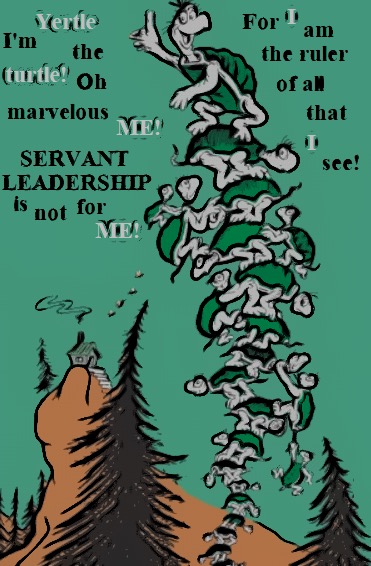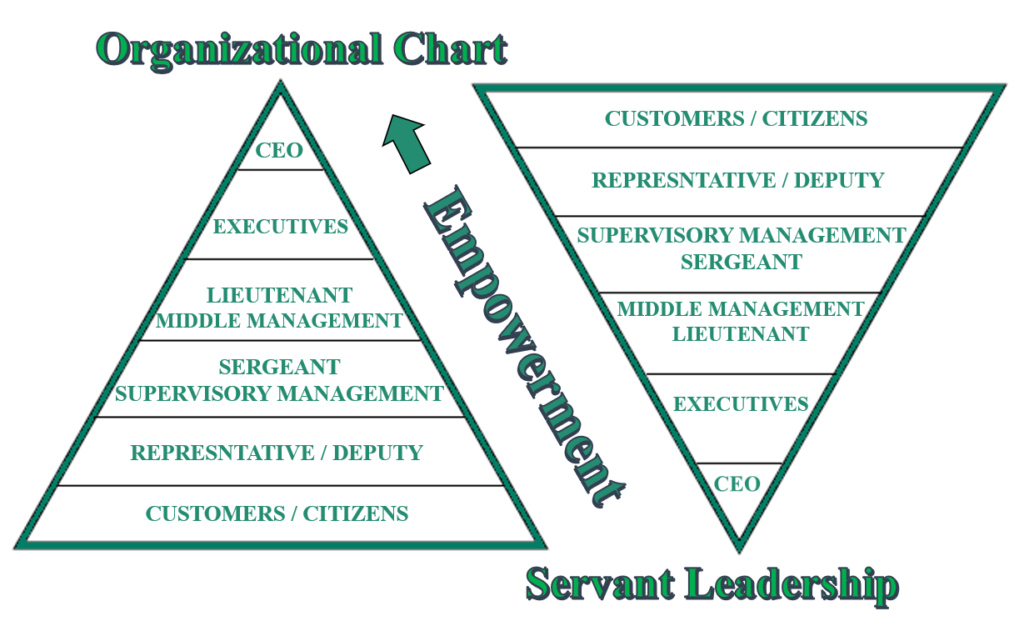There is no “I” in team, but there is “me work”
that should be done by every leader in law enforcement to create a cohesive work environment so that all stakeholders benefit – From community member to department head. If police agencies want to build trust with communities, they need to build trust with their employees. After all, police officers are the face of the organization when it comes to community partnership. If you want officers to follow the core values, you first have to follow them yourself.
This article will explain some of the key components necessary to achieve team success and commitment by internally Marketing police agencies’ Strategic Communications. Business success and employee engagement requires transparently advertising the destination, direction of travel, and the means of getting there – Police Departments are no different and the way ahead needs to be openly shared.
Apple Inc. uses brand equity, marketing integration, and strategic marketing consistency in their advertisements for all Apple platforms. There is no doubt that most people can identify an Apple product at a glance regardless if the item is an iPhone, a MacBook, or an iPad. Electronic items that are mistaken as Apple products, have likely mimicked Apple’s appearance.
In leadership, imitating another’s appearance and behaviors is a true example of flattery – It is genuine and sincere modeling because leadership traits are being done right. Apple’s strategic marketing plan is consistent both internally and externally. This is what police agencies should strive for – To have people recognize police officers in a positive and favorable manner. Moreover, officers that enforce laws should find it easy to be proud of their service and follow societal rules. Nonetheless, the modeling of good behavior starts at the top.
Developing Leadership
There are some established concepts in developing effective leaders that need to be defined. Every police officer should be respected community leader, but the respect has to be earned. One of the first steps in leadership development requires the willingness to do the necessary “me work”. Examples include being open to 360 feedback (Compass Checks), being able to have courageous conversations, and being transparent in mistakes and motives. Problem solving requires the use of applied research. Police leaders must understand end results and refrain from simply using buzzwords instead of mastering leadership concepts.

The Yertle Effect is an adaption from Dr. Seuss’s book, Yertle the Turtle.
Yertle the Turtle lived in a pond and did not like his limited view. He convinced other turtles to climb on top of each other so he could get a 30,000-foot view. Yertle was supported by other turtles and he did not care if the load was unequally distributed. Nor did the management turtles below him. All of Yertle’s directions made it to the bottom of the pyramid, but if it was too heavy for some, if things were off balance, or if anyone complained he did not hear of the disparities. The turtles at the bottom had the heaviest load and were the least supported. The turtles on the bottom grumbled to those above them, but no one listened. The turtles in the middle had a better view than others so they did not inform the leaders above them of the problems below. One day, a turtle named Mack had had enough and left his position, which caused the pyramid of turtles to come to tumbling down.
Servant Leadership
Leadership hierarchy models tend to resemble organizational charts. The very principle of a chain of command mandates that the Chief of Police be at the top and the pecking order follow as appointed. Organizational charts have a starkly different purpose than leadership models. The mistake of building a leadership structure like an organizational chart can create a Yertle Effect. Police Departments do not exist so Chiefs and Sheriffs can have positions; top positions in law enforcement exist because communities exist. A flaw in leadership design places the department head at the top and the officers at the bottom. In hierarchy leadership, guidance and ideas only roll in one direction. The Chief is ultimately responsible, but an empowerment model, like Servant Leadership, allows employees at all levels to make leadership decisions and obtain personal goals without breaking core values. Simply stated, the rules are followed.

Servant Leadership is the belief that individuals in an organization are in positional leadership roles to support others. Chiefs/Sheriffs empower and support executive staff so that can support and empower the individuals below (Or in this case, above). The support and empowerment continues all the way to the line officer that interacts with the community.
This is where utilizing the constructs of Integrated Marketing Communications (IMC) can benefit police agencies. If the strategic vision is to be obtained, then the core values and missions have to be followed. Internal and external communications must align with the outward facing mission and vision statements. State the vision, conduct the missions with the purpose of obtaining the vision, and conduct all practices governed by the core values.
In other words, say an agency has publicly expressed a vison of being the most “Trusted, Professional and Courteous” police agency in the state, then the agency has to conduct daily missions in that manner. A core value for the agency might be “Service Before Self” and the missions should be governed with this in mind. The IMC part is that the leadership behavior must follow the rules so that officers follow the rules. The internal strategic messages match the behaviors and the face of the agency models good leadership traits resulting in public trust.
Tying this back to Apple Inc., it is important to understand how Apple uses integrated marketing communications to build brand equity. First, to address brand equity, a definition is in order. People find value in superior products, but they also find value in brands themselves based on a brand’s image – This is brand equity. Most people don’t know or care how an iPhone works, but they know iPhones work well and they know one when they see one. Apple’s integrated marketing communication plan is consistent across all of their products. Because Apple sends the right message, using the right medium, to the right target audience, they create brand equity.
The same principles can be used to build brand and service equity with police officers and communities by consistently marketing internal and external strategic communications that are aligned with the organizations vision and core values. The same concepts of brand equity can be obtained and sustained in a public service industry. Employee image and the service provided is what is being brand marketed. Consistency of core values and integrating them as cultural norms builds a team committed to the strategic roadmap of the vision. In essence, the rules are followed and when that happens societies begin to trust.
- Right Message
The right message involves walking the talk and leading by example. Using an organization’s core values to govern how missions are accomplished helps build employee commitment. It is important to sell and market the integrated strategic plan (ISP) internally and externally. A organization with a bad reputation has to market both internally to change behavior and externally to change public beliefs. Because each organization is different, how to internally and externally market an ISP will require creative think-tank sessions. The idea of an ISP needs to be shared and the Mission, Vision, and Values should never be a secret.
- Right Medium
Departments must align the strategic message with the core values and the visionary goal. The daily missions have to be conducted with the constructs of the vision and values in mind. The ISP has to be transparently shared, both internally and externally, and it is critical to understand that every representative of an organization is a medium of communication to citizens. Being able to integrate the strategic communication plan over mediums like advertisements and social media are also necessary, but they need to be timely and relevant communications.
Consistency vs Agility
Sometimes shift happens, and goals and visions need to be adjusted. Strong and influential leaders know that strategies may have to change. This does not indicate a lack of consistency, but instead is a sign of agility. If a strategic goal is too lofty, acceptance of raising the bar is easier to obtain from employees. However, if the strategic plan is changing drastically, it might indicate the organization was headed in the wrong direction. Equally, some obstacles cannot be overcome like financial limitations due to economic downturns. Organizations often have to readjust and finetune the visionary goal. Small changes may not be felt, but the boat will likely rock if the readjustment is significant. During change-opportunities, employees may feel that leadership is being inconsistent, when in reality, the effects are being caused by agility. This problem can often be remedied by transparently sharing with employees why things changed.
If police agencies want to change public perceptions, they need to brand market officers in a positive light. The first part is doing the necessary “me work” of being transparent and ensuring the daily missions are governed by the core values so the vision can be met.

3 Responses to Integrated Marketing Communications & Law Enforcement Agencies – Building Public Trust from Within